Top 5 Blockchains Powering Real Estate Tokenization
Real estate is going digital. Tokenization lets investors buy fractions of property as blockchain-based tokens, making assets more liquid and accessible. In this article, we explore the top 5 blockchains powering tokenized real estate — from Ethereum’s security to Algorand’s speed.

Real estate tokenization is the process of turning property value into digital shares on a blockchain, allowing many investors to own fractions of a property. This innovation is transforming property investment by making real estate more accessible and liquid for everyday people. Analysts predict tokenization could unlock trillions in value by 2030, and even major financial leaders have praised it as “the next generation for markets”. In other words, a traditionally illiquid $379 trillion asset class can become easier to trade, with settlement times dropping from weeks to minutes.
As this trend gains momentum, choosing the right blockchain platform for tokenized real estate is critical. Each blockchain has different strengths in security, speed, costs, and compliance features. The blockchain you use can make or break a project’s success by affecting how scalable and compliant your tokenized property offering will be. In this overview, we will explore five leading blockchains that are powering real estate tokenization today, and why they stand out. These top 5 platforms are enabling investors around the world to buy “bricks and mortar” through digital tokens, bringing us closer to a more inclusive and efficient property market.
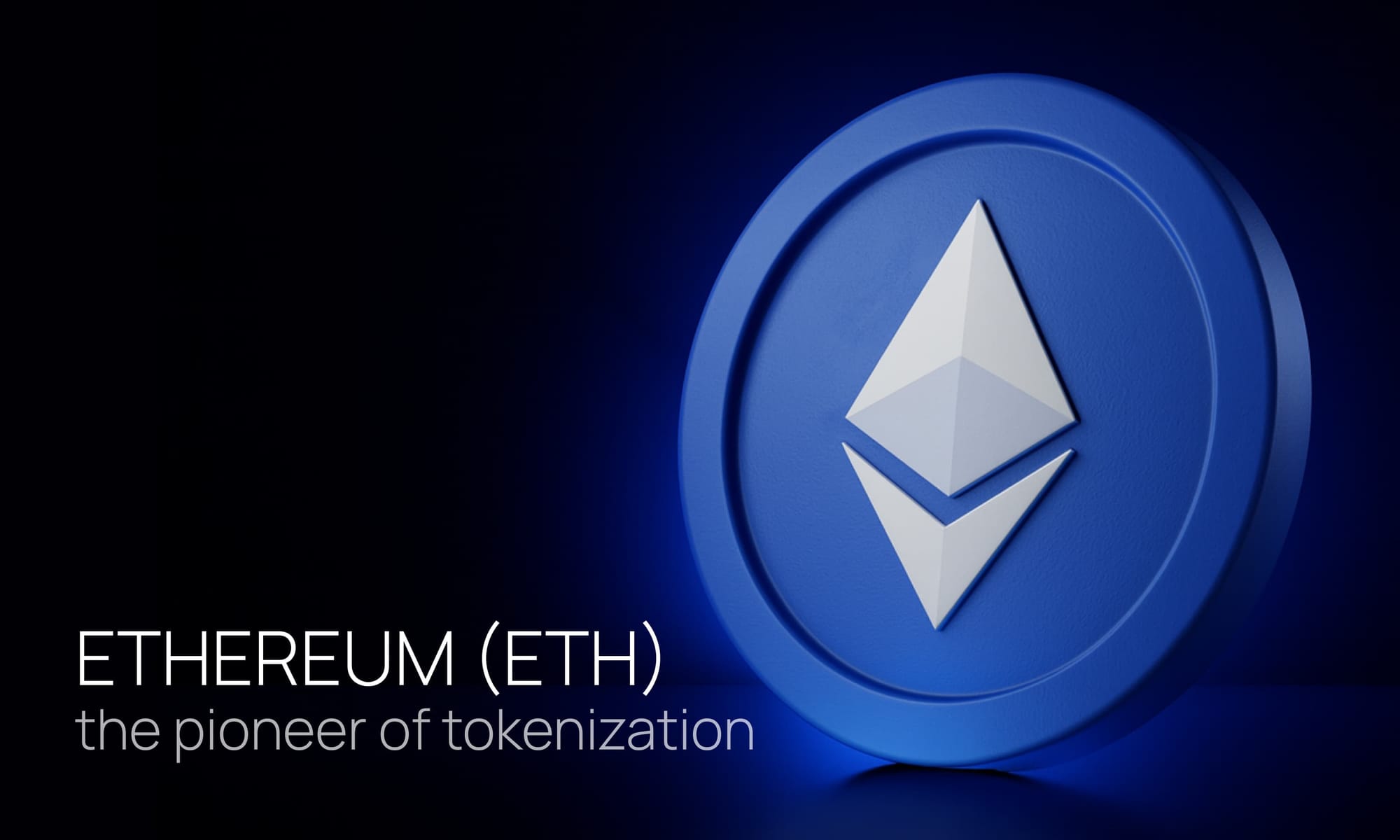
1. Ethereum (ETH) – The Pioneer of Tokenization
Ethereum is the original smart contract blockchain and the most popular choice for real estate tokenization so far. It introduced the ERC-20 and ERC-721 token standards, which allow assets to be represented as fungible tokens or unique NFTs. Many early tokenized property projects launched on Ethereum – for example, the AspenCoin offering (fractional shares of the St. Regis Aspen Resort) and the RealT platform for rental homes both used Ethereum’s ERC-20 tokens to represent ownership. These projects benefited from Ethereum’s huge ecosystem of developers, wallets, and exchanges, which provides trust and liquidity.
One real-world example is RealT, a marketplace for tokenized rental properties. RealT operates on Ethereum (along with a layer-2 sidechain) to ensure secure, compliant token issuance with low transaction fees. By using Ethereum’s network, each RealT token is backed by smart contracts enforcing ownership rights and rent distribution. Ethereum’s decentralization and security (now using proof-of-stake validation) make it a reliable base layer for high-value assets. On the downside, Ethereum’s gas fees (transaction costs) can be high during network congestion. This means small investors might find it expensive to trade tokens on Ethereum’s main network. To address this, many projects either utilize scaling solutions or turn to alternative blockchains (like the ones below) to make day-to-day trading affordable. Despite these challenges, Ethereum remains the standard-setter – its proven track record and broad support keep it at the forefront of real estate tokenization.
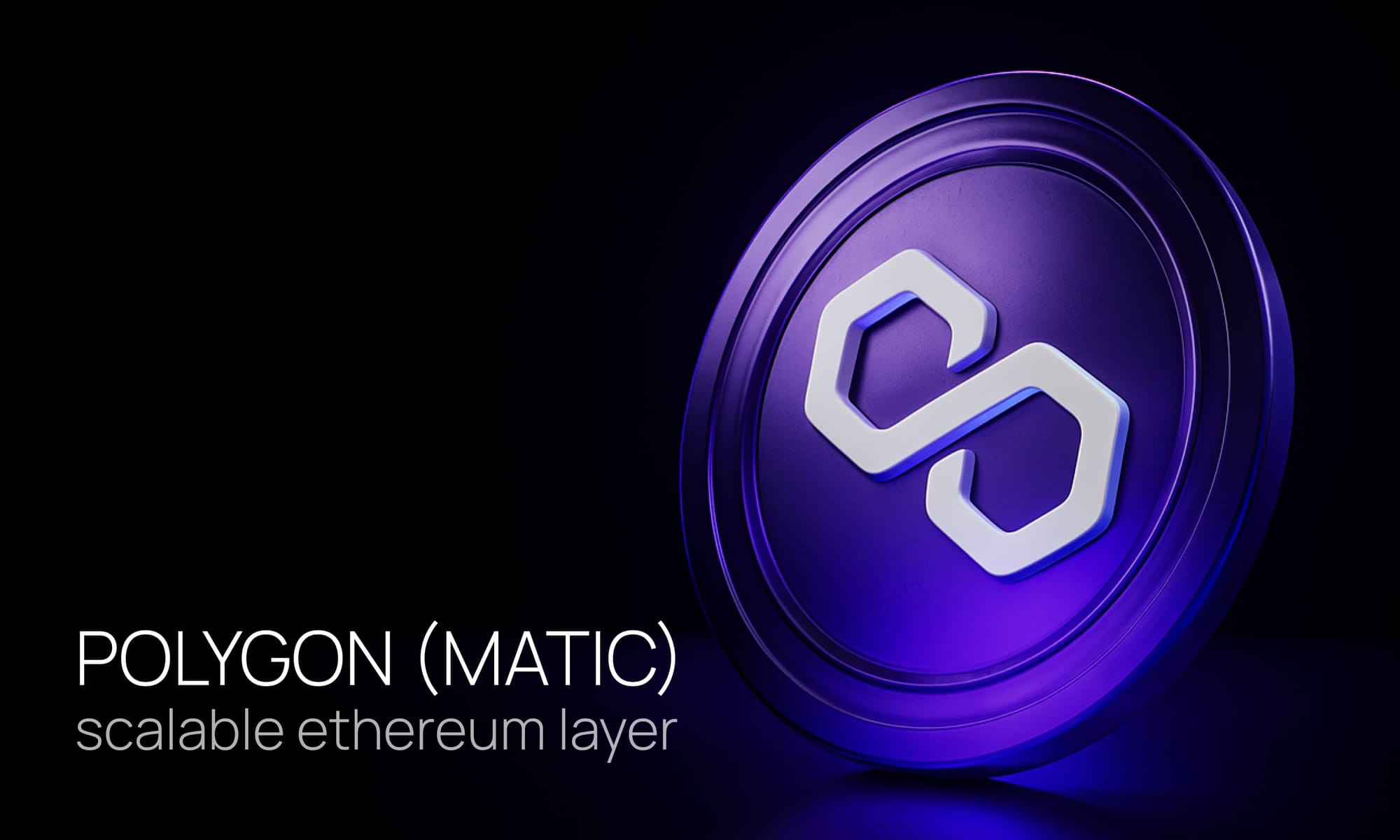
2. Polygon (MATIC) – Scalable Ethereum Layer
Polygon is a Layer-2 network that works on top of Ethereum, offering much lower fees and faster transactions. Think of Polygon as a lighter, quicker highway that still connects back to Ethereum’s main road. By using Polygon, real estate token platforms can run Ethereum-compatible smart contracts without the high costs. This makes micro-investments in property (like buying $50 worth of a house token) economically feasible, since transaction fees on Polygon are only a few cents or less. Polygon’s compatibility also means developers can easily port Ethereum-based projects to Polygon and still use the familiar tools and wallets.
For instance, the commercial real estate platform HoneyBricks chose Polygon to issue its property tokens. HoneyBricks’ security tokens are tokenized on the Polygon network for fast, low-cost transactions. This allows investors on HoneyBricks to receive rental payouts in cryptocurrency (such as USDC stablecoin) without large fees eating into their earnings.
At Tokenizer.Estate, we also work closely with Polygon to power real estate tokenization. Our platform uses Polygon’s speed and affordability to ensure that property-backed tokens are both accessible and secure for a global investor base. By combining Polygon’s technology with our expertise in real estate tokenization, we help create a market where even small investors can participate with confidence.
Polygon’s high throughput (handling thousands of transactions per second) makes it ideal for high-volume trading of real estate tokens, where many small trades might happen each day. In short, Polygon keeps costs low and speeds high, all while benefiting from Ethereum’s security in the background. This combination of affordability and compatibility has made Polygon a top choice for projects aiming to open real estate investment to a mass audience.
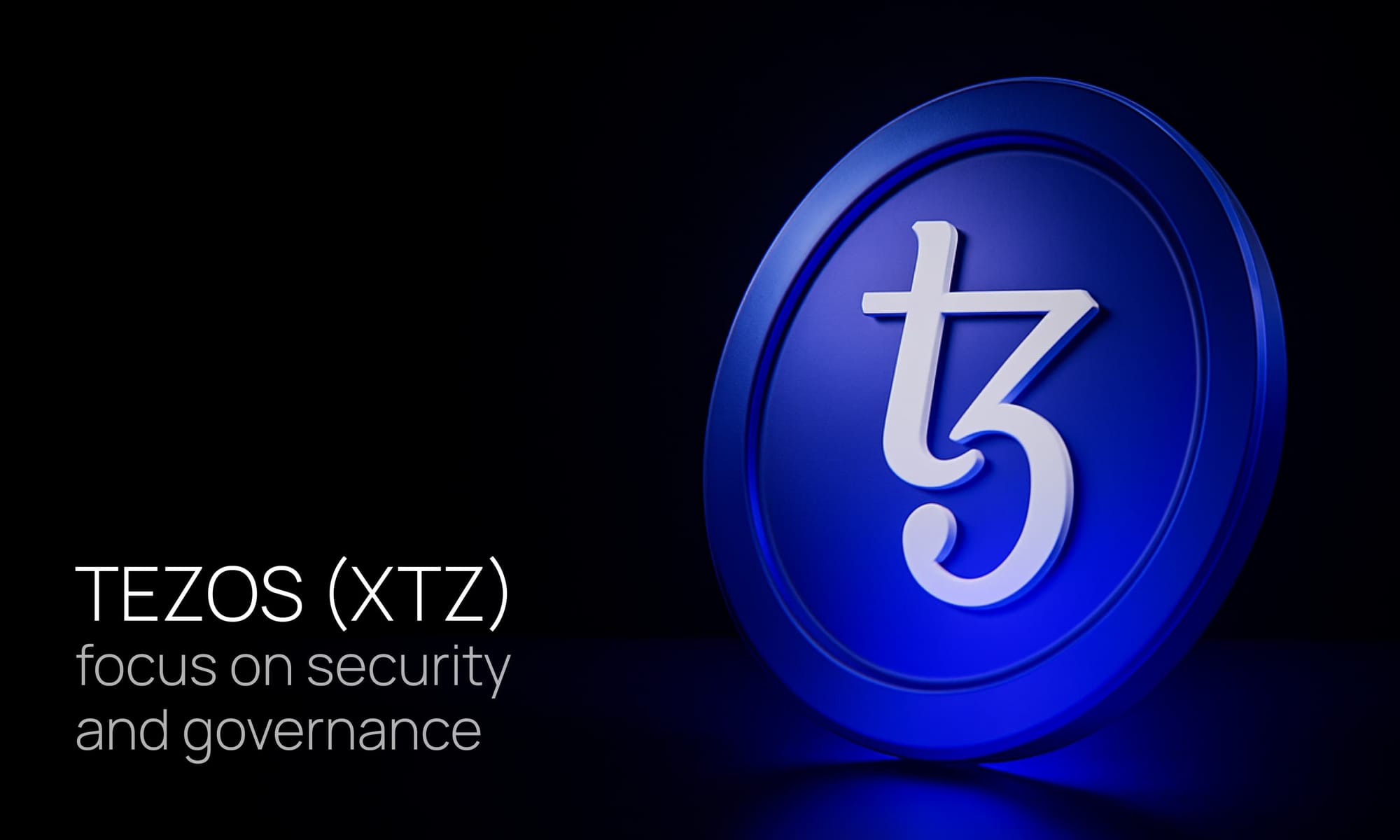
3. Tezos (XTZ) – Focus on Security and Governance
Tezos is a unique blockchain known for its on-chain governance and strong emphasis on security. Unlike some networks that require disruptive upgrades, Tezos can update itself (self-amend) through community votes. This ability is useful for real estate tokenization because laws and standards evolve – Tezos can adapt without needing a hard fork or new blockchain. Tezos also supports formal verification of smart contracts, a process that mathematically checks the correctness of the code. For tokenized real estate, this means greater confidence that the smart contracts (which manage property shares and investor rights) are free of bugs and behave as intended.
These features led the investment firm Elevated Returns to choose Tezos for tokenizing its $1 billion real estate portfolio. Elevated Returns’ decision illustrates that Tezos offers the compliance and reliability needed for large-scale, institutional projects. With Tezos, real estate tokens can be programmed with complex rules (for example, automatic compliance checks or voting mechanisms for property governance) in a secure way. Tezos uses a proof-of-stake consensus (like many modern chains), making it energy-efficient and fast, with low transaction fees. While its ecosystem is smaller than Ethereum’s, Tezos has a dedicated community and has proven itself in several real estate pilots. Overall, Tezos shines in scenarios where long-term stability and legal compliance are top priorities – it provides a solid foundation for tokenizing property assets with an eye toward future upgrades and rigorous security checks.
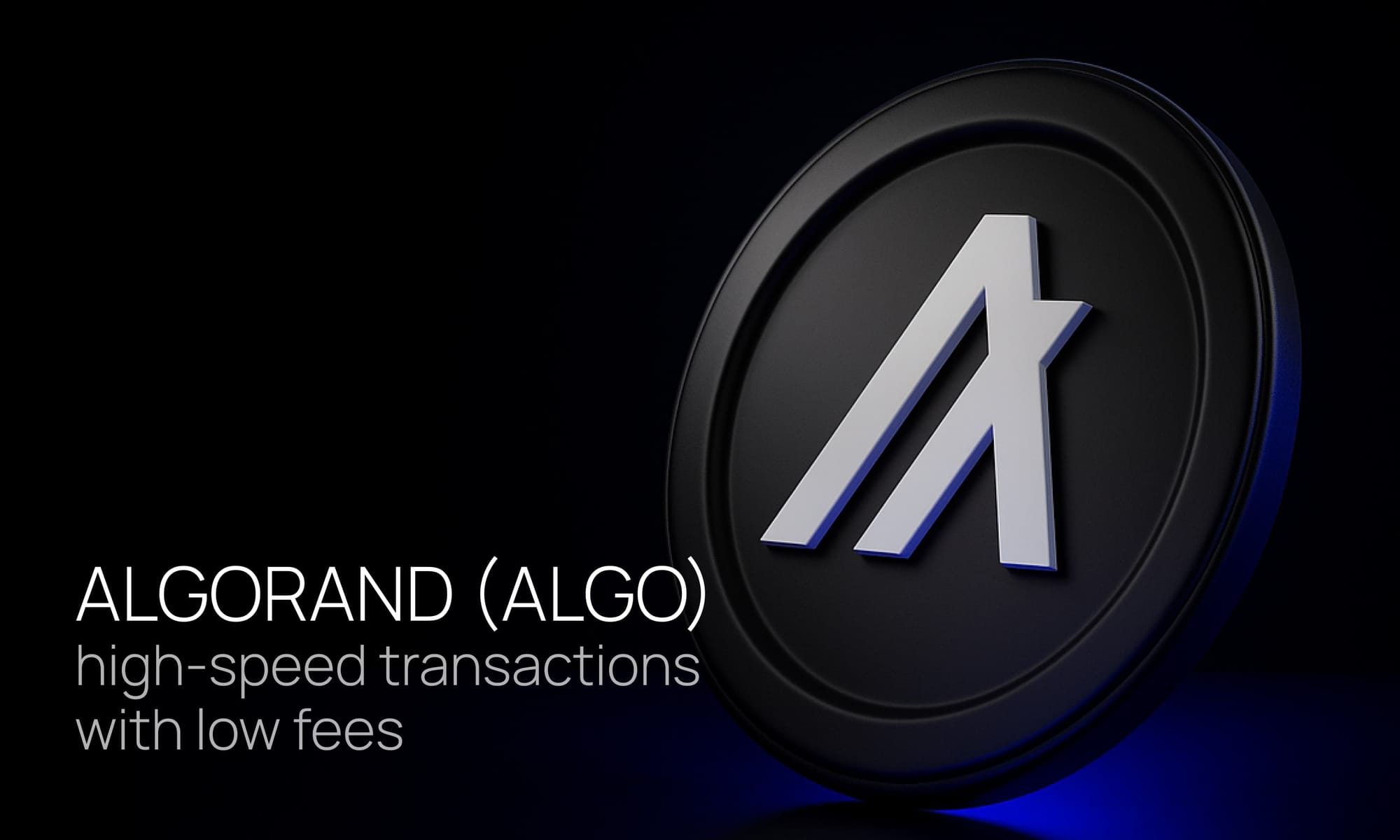
4. Algorand (ALGO) – High-Speed Transactions with Low Fees
Algorand is a blockchain platform designed for speed, low cost, and simplicity. It uses a Pure Proof-of-Stake mechanism that finalizes transactions in seconds and keeps fees typically around a fraction of a cent. For real estate tokenization, Algorand’s efficiency means even small transactions (like distributing a few dollars of rent to many token holders every day) can be done affordably. This opens the door to models like daily rental income payouts or extremely low minimum investments, since the blockchain overhead is minimal.
A great example is Lofty AI, a U.S. platform that sells tokens for shares in individual rental properties. Lofty leverages Algorand to let people invest with as little as $50 and receive rental income every day in their crypto wallets. Algorand’s high throughput ensures that these daily micro-payments and any token trading happen quickly and reliably. The network is also known for its strong focus on avoiding forks and maintaining uptime, which gives confidence that property ownership records won’t be disrupted. Another plus is Algorand’s built-in support for Algorand Standard Assets (ASA), a token standard that makes it straightforward to create and manage tokens for real-world assets. For investors and developers, Algorand provides a smooth user experience – quick transactions and no need to worry about spiking fees. In summary, Algorand is popular for real estate projects that target small investors and high transaction volumes, as it combines speed with cost-effectiveness while still ensuring security.
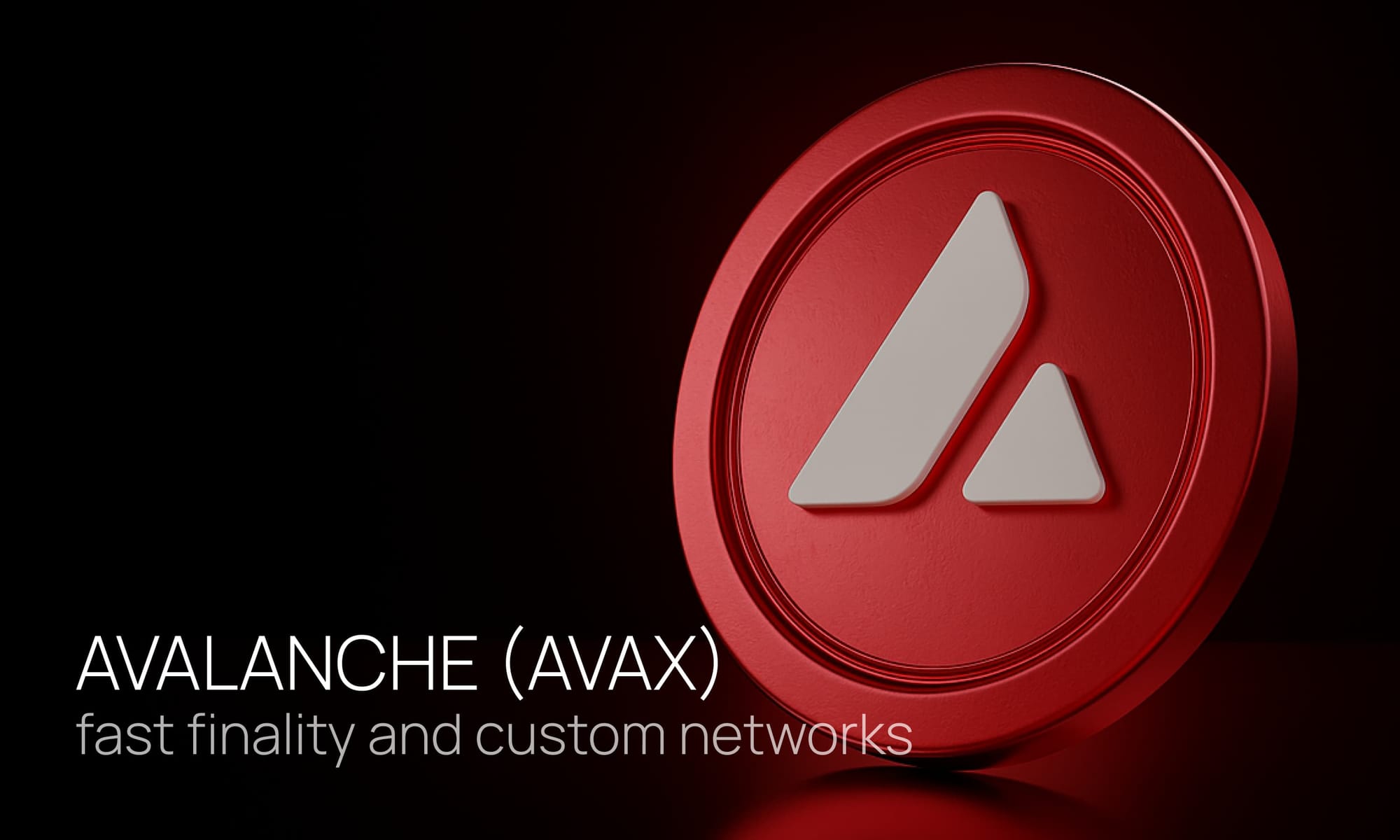
5. Avalanche (AVAX) – Fast Finality and Custom Networks
Avalanche is a modern blockchain known for its rapid transaction finality and flexible architecture. Finality refers to how quickly a transaction is confirmed and considered permanent; on Avalanche this can be under 2 seconds, which is great for time-sensitive transactions like property settlements or live trading of tokens. Avalanche also boasts high throughput (handling thousands of transactions per second) thanks to its unique consensus protocol. For real estate tokenization, these traits mean the network can support busy marketplaces and quick investor payouts without delays.
One notable strength of Avalanche is its Subnet capability. This allows projects to create their own mini-blockchains (subnets) under the Avalanche umbrella, customized for specific needs or compliance requirements. For example, a real estate consortium could run a private subnet for their property tokens, with only approved validators, while still benefiting from Avalanche’s core technology. In terms of real usage, Avalanche has already proven itself in real estate with the New York Real Estate Fund (NYREF). NYREF successfully tokenized an $18 million property in the Bronx using the Avalanche blockchain. The result was fractional ownership of the building made available to investors, with faster settlement and improved liquidity. This case showed that even high-value urban real estate can be efficiently managed on a blockchain. Avalanche’s balance of speed, security, and adaptability makes it ideal for projects that might need their own rules or networks (via subnets) while still wanting to tap into a large, interoperable ecosystem. It’s an appealing choice for innovative real estate platforms that demand both performance and flexibility.
| Blockchain | Example Use Case | Key Advantage for Real Estate |
|---|---|---|
| Ethereum (ETH) | AspenCoin, RealT platform | Largest ecosystem & proven security (widely trusted by investors and developers) |
| Polygon (MATIC) | Tokenizer.Estate, HoneyBricks platform, Assetera exchange | Very low fees and fast transactions, while staying compatible with Ethereum |
| Tezos (XTZ) | Elevated Returns’ $1B tokenized portfolio | On-chain upgrades and formal contract verification for long-term stability |
| Algorand (ALGO) | Lofty AI rental property tokens | High-speed processing with minimal fees, enabling daily payouts and micro-investments |
| Avalanche (AVAX) | NY Real Estate Fund (Bronx property) | Rapid finality and scalable design (supports custom subnets for compliance needs) |
Other Notable Blockchains for Real Estate Tokenization
Beyond our top five, there are several other blockchains being used in real estate tokenization. The landscape is diverse, and different projects may opt for different networks based on their specific needs:
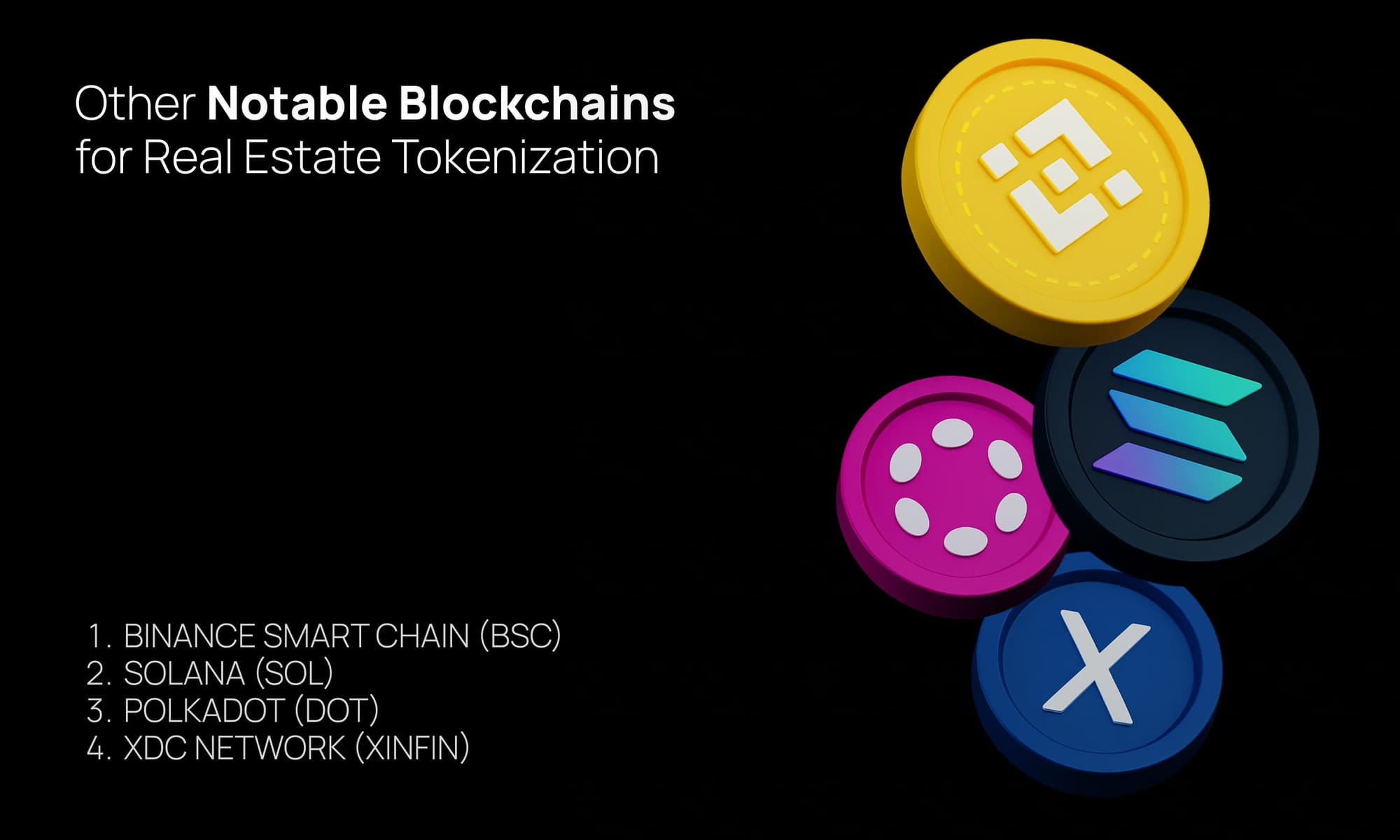
- Binance Smart Chain (BSC) – BSC (now often called BNB Chain) is a popular alternative with low transaction fees and quick block times. It’s Ethereum-compatible, which makes it easy to port token contracts over. BSC offers lower costs for issuing and trading tokens, which is why some real estate tokenization platforms consider it. For example, a project focusing on small investors might use BSC to minimize fees for its users.
- Solana (SOL) – Solana is known for very high throughput (thousands of transactions per second) and very low latency. This ultra-fast performance could benefit real estate platforms expecting a high volume of trading or needing near-instant updates. Solana’s ecosystem in real estate is still emerging, but its technology is promising for scenarios like live trading of tokenized property shares. The trade-off is that Solana is somewhat more centralized and has had downtime issues, which means critical projects must weigh speed versus resilience.
- Polkadot (DOT) – Polkadot isn’t a single blockchain but a network of interoperable chains (parachains). For real estate, Polkadot allows projects to build a custom blockchain tailored to their needs (for example, emphasizing privacy or specific compliance logic) while still connecting to a broader network. Some security token platforms are exploring Polkadot for its flexibility. It requires more complex setup but can be powerful if a project needs a bespoke solution rather than a general-purpose chain.
- XDC Network (XinFin) – XDC is a hybrid blockchain (partly public, partly permissioned) that has gained attention in trade finance and could apply to real estate debt tokenization or fund platforms. It offers fast transactions and low fees, aiming to satisfy enterprise requirements. An enterprise real estate fund might choose XDC to integrate with existing financial systems more easily, given its focus on business use cases.
Even smaller or niche blockchains have seen tokenized real estate projects. For example, in Croatia a fintech company used the Telos blockchain (a lesser-known network) and announced the tokenization of about $35 million in coastal real estate. This shows that innovation is happening everywhere, from major platforms to niche ones, as entrepreneurs seek the best fit for their property projects. In fact, as of 2025, blockchains like Ethereum, Tezos, Binance Smart Chain, Polkadot, and Solana are all being used to tokenize real estate in one way or another. Each offers different trade-offs in decentralization, speed, and features. The good news is that developers have a rich toolkit to choose from. The focus now is on matching each real estate tokenization project with the blockchain that best meets its needs – whether that is maximum security, lowest cost, regulatory compliance, or global scalability.
| Blockchain | Notable Feature or Usage |
|---|---|
| Binance Smart Chain (BNB) | Low fees and EVM-compatibility; used by projects seeking affordable transactions |
| Solana (SOL) | Ultra-fast throughput; potential for high-frequency trading of property tokens |
| Polkadot (DOT) | Interoperable network of chains; allows custom real estate blockchains (parachains) with specific rules |
| XDC Network (XDC) | Enterprise-friendly hybrid model; explored for tokenizing real estate debt and funds |
Conclusion – A New Era for Property Investment
Real estate tokenization is quickly moving from a futuristic idea to a practical reality. The blockchain platforms we’ve discussed are breaking down barriers in the property market. Investors from around the world can now buy a stake in a rental house in Detroit or a luxury condo in Dubai with just a few clicks, something unimaginable a decade ago. Importantly, this innovation is happening with an eye on compliance and security. Many platforms work within existing laws – for example, they enforce investor eligibility and property regulations via code – to ensure that owning a digital share of a building is legitimate and safe.

The impact is already visible. Tokenized real estate platforms have attracted tens of thousands of investors globally, injecting fresh liquidity into a historically illiquid market. Early adopters are receiving rental income in crypto, and some have seen their property token values appreciate as the real estate market grows. There is also growing institutional interest and government support. In Dubai, the government’s Land Department projects that by 2033 about 7% of property transactions could be tokenized (around $16 billion in value). Major financial hubs like Dubai are actively exploring blockchain-based property systems, which adds credibility and momentum to the sector.
All these developments point to a more inclusive and transparent future for real estate investment. By leveraging the right blockchain technology, owning “a piece” of a property might become as easy as buying shares of stock. The top blockchains we reviewed – from Ethereum’s vast network to Algorand’s speedy platform – are each contributing to this transformation. Real estate tokenization blends the stability of property with the efficiency of blockchain, creating opportunities that are both familiar (rental income, property appreciation) and radically new (24/7 trading, fractional ownership for minimal amounts).
In conclusion, the world of property investment is entering a new era where blockchains play a central role. Whether you are a small investor wanting diversification or a developer seeking new funding avenues, understanding these blockchains is key. As the technology and regulations continue to mature, we can expect even more real estate assets to be tokenized on these networks. The dream of a more accessible real estate market is becoming reality – one token at a time, on blockchains that ensure every digital deed is secure and every investor, big or small, can take part in the property market revolution.

